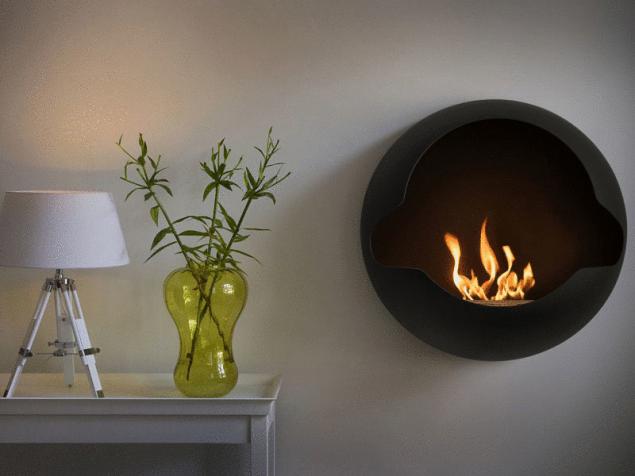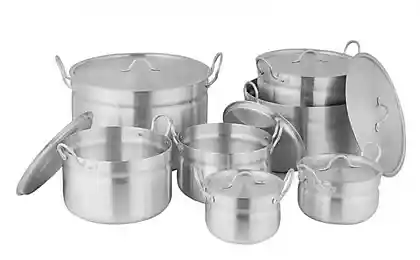498
Fireplaces ethanol hazardous to health – the findings of scientists
Chemists of the Fraunhofer Institute conducted a study that tested the safety of popular fireplaces on ethanol.
The team, headed by Michael Wensing investigated four furnaces and eight of liquid and gel fuels. Dr. Wensing explained: "In purely theoretical terms, ethanol and bioethanol completely burns, forming carbon dioxide and water. But in the real world, everything is different.The burning depends on the quality and type of fuel, temperature of combustion. But, as a rule, ethanol does not burn completely. The results of the combustion process — carbon monoxide, a respiratory toxin; organic compounds (e.g. benzene, a carcinogen); irritant gases ( nitrogen dioxide and formaldehyde).

Scientists measured high concentrations of contaminants, and found: normative values often exceeded. For example, all devices exceeded the recommended value of the premises from 0.35 mg / m3 for nitrogen dioxide; in one case, the result was significant: 2.7 mg / m3. With regard to formaldehyde, the stoves are also not met the requirement of 0.1 million is the maximum measured value was 0.45 ppm. One unit reached a peak concentration of released carbon dioxide 6,000 ppm, far above the hygienically acceptable threshold value of 1,000 ppm.
The crucial factor here is fuel consumption. This means that the more ethanol is burned within a certain period, the greater the amount of pollutants. At the same time, disengages ultrafine combustion particles. They have a diameter of 10,000 smaller than the thickness of a human hair and can penetrate deep into human lungs. According to Wensing: "Decorative heaters on the basis of ethanol are a source of contaminants in indoor air that are hazardous to health. In order to ensure safe levels of air quality that is not harmful to human health, we recommend you to avoid using these devices in the interior of the apartment. The unit should be used only in large, well ventilated areas".
Testing of wood stoves led to a completely different picture. Researchers detection: until the oven door is closed, its impact on the quality of the air in the inner space can be neglected. Emissions occur only when the oven is ignited and replenished with firewood. At the time, the researchers were able to measure the brief burst of concentration.
Source: nauka24news.ru/
The team, headed by Michael Wensing investigated four furnaces and eight of liquid and gel fuels. Dr. Wensing explained: "In purely theoretical terms, ethanol and bioethanol completely burns, forming carbon dioxide and water. But in the real world, everything is different.The burning depends on the quality and type of fuel, temperature of combustion. But, as a rule, ethanol does not burn completely. The results of the combustion process — carbon monoxide, a respiratory toxin; organic compounds (e.g. benzene, a carcinogen); irritant gases ( nitrogen dioxide and formaldehyde).

Scientists measured high concentrations of contaminants, and found: normative values often exceeded. For example, all devices exceeded the recommended value of the premises from 0.35 mg / m3 for nitrogen dioxide; in one case, the result was significant: 2.7 mg / m3. With regard to formaldehyde, the stoves are also not met the requirement of 0.1 million is the maximum measured value was 0.45 ppm. One unit reached a peak concentration of released carbon dioxide 6,000 ppm, far above the hygienically acceptable threshold value of 1,000 ppm.
The crucial factor here is fuel consumption. This means that the more ethanol is burned within a certain period, the greater the amount of pollutants. At the same time, disengages ultrafine combustion particles. They have a diameter of 10,000 smaller than the thickness of a human hair and can penetrate deep into human lungs. According to Wensing: "Decorative heaters on the basis of ethanol are a source of contaminants in indoor air that are hazardous to health. In order to ensure safe levels of air quality that is not harmful to human health, we recommend you to avoid using these devices in the interior of the apartment. The unit should be used only in large, well ventilated areas".
Testing of wood stoves led to a completely different picture. Researchers detection: until the oven door is closed, its impact on the quality of the air in the inner space can be neglected. Emissions occur only when the oven is ignited and replenished with firewood. At the time, the researchers were able to measure the brief burst of concentration.
Source: nauka24news.ru/
Floating is the fastest and most effective means of self-healing and healing the body
How to determine what vitamins we are lacking























